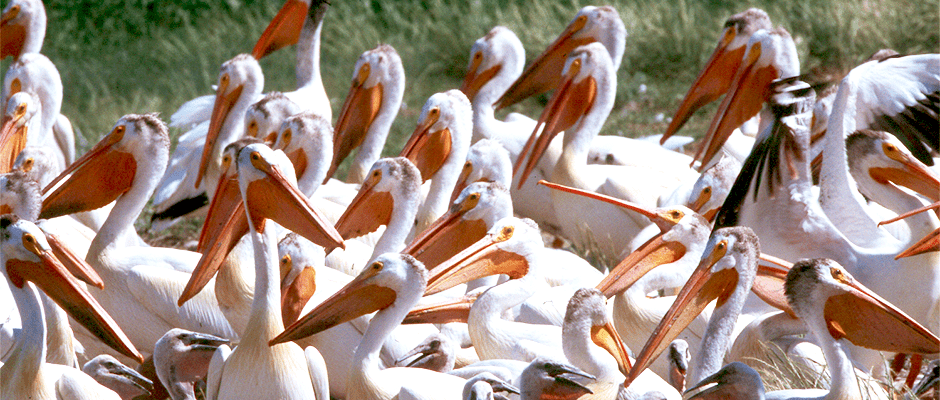Share this article
Drought reclaims habitat for North Dakota pelicans
Drought has been stressing crops and worrying farmers across the country, but it could be a blessing in disguise for pelicans in North Dakota, where it’s preserving breeding areas vulnerable to flooding.
To protect American white pelicans (Pelecanus erythrorhynchos) breeding in the region, President Theodore Roosevelt created Chase Lake National Wildlife Refuge in August 1908. By then, settlers’ recreational shooting had driven the enormous white birds, whose black-tipped wing span measures nine feet, down to 50 individuals. Now, the area supports the biggest breeding colony of this species in North America, or a third of its total population in the continental United States — about 27,500 birds.
But groundwater flooding that began two decades ago cut off a peninsula in the north of the refuge in 1995, leaving just a few shrinking islands for the pelicans to nest on, refuge manager Neil Shook said. The area of the biggest one went from over 20 acres in 2014 to 12 last year under the climbing waters, prompting concerns about losing the habitat and displacing the animals.
“Water levels have kept rising steadily in Chase Lake,” Shook said. “Luckily, this year, one of those islands reappeared again, and there were birds nesting on it.”
Shook attributes the nesting ground’s recovery to an usually dry past three years. And although the population has remained steady over the last decade, he said, the pelicans are vulnerable to variable spring conditions.
“Pelicans are arriving 16 days earlier compared to the 1990s,” he said. “Spring in North Dakota can be challenging, everything from heat, cold, snow, rain and hailstorms. Those birds are on that island totally exposed to the elements. Weather events do a lot of damage to the young.”
To sustain the pelicans’ stable numbers in the face of the changing environment, he said, research and monitoring efforts that took off in 2000 continue today.
Header Image: A flock of American white pelicans nests on North Dakota’s Chase Lake National Wildlife Refuge. ©Neil Shook








